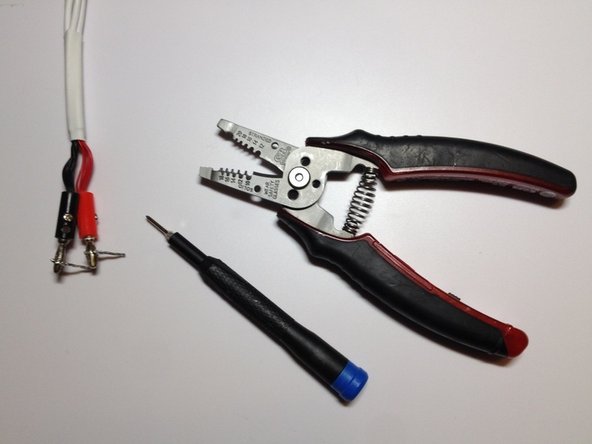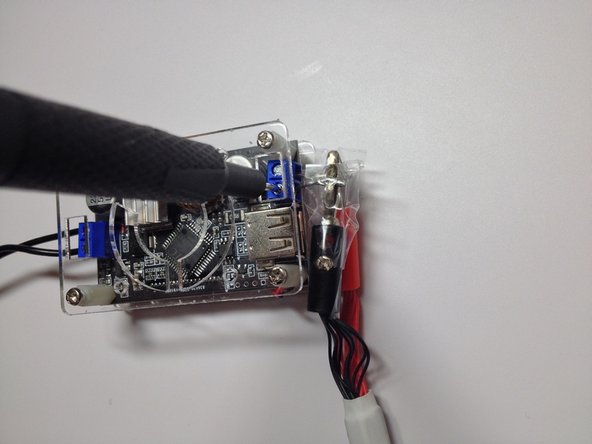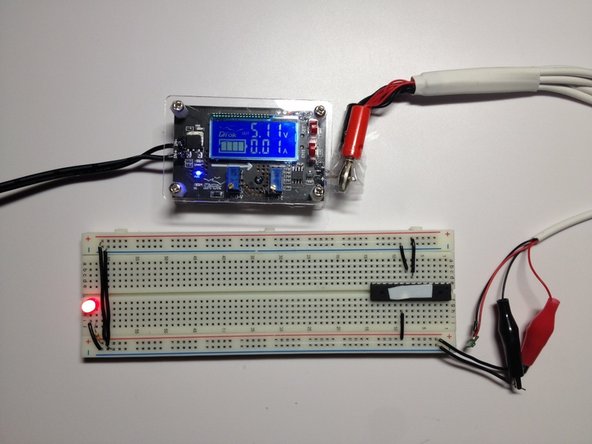Diese Version enthält möglicherweise inkorrekte Änderungen. Wechsle zur letzten geprüften Version.
Was du brauchst
-
Dieser Schritt ist noch nicht übersetzt. Hilf mit, ihn zu übersetzen!
-
Find a DC-DC Converter (probably a buck converter). This is the heart of your DC Power Supply.
-
You DEFINITELY need one with a voltage and current reading, and adjustable voltage (at least for iPhone repairs). If you get one with a USB port, it can serve as a USB ammeter, but a little more work is required.
-
The one I used is from DROK, and cost $13.99 on Amazon.
-
-
Dieser Schritt ist noch nicht übersetzt. Hilf mit, ihn zu übersetzen!
-
Really, any cable with power on one end and a battery connector on the other end will do. I got a cheap one off eBay that supported the 4 through the X, and had two alligator clips.
-
If you want to splurge a little on your power supply, get a cable like this, that includes the battery data cables. This will stop the phone from rebooting every few minutes while powered by DCPS. The cable also includes a probe so you don't have to boot up the phone with the power button or tweezers
-
If every penny you spend on this is a penny that you can't use to buy phones off eBay (believe me, I know) - and you have broken batteries - you can detach the control board from the battery cell and solder wires onto it. It will even have battery data!
-
-
-
Dieser Schritt ist noch nicht übersetzt. Hilf mit, ihn zu übersetzen!
-
Use the biggest wall wart you have lying around. I had a 12 volt, 2.5 amp one that used to power a router, so I used that.
-
Take a pair of wire strippers, cut the plug off, and strip the two wires. Make sure you know which end is positive and which end is negative.
-
The stripped wire ends.
-
-
Dieser Schritt ist noch nicht übersetzt. Hilf mit, ihn zu übersetzen!
-
My cable came with banana plugs, so I soldered little 90-degree wires so that it would connect to the DC-DC converter. Make sure to insulate them!
-
If you don't want to (or are not allowed) to solder, unscrew the banana plugs and strip the small red wires going to the plugs.
-
For those of you going the ghetto route, solder two pieces of wire to the positive and negative terminals where the battery would connect to the control board.
-
-
Dieser Schritt ist noch nicht übersetzt. Hilf mit, ihn zu übersetzen!
-
Screw the cables into their sockets.
-
Do NOT mix up positive and negative!
-
Alternatively, you could use alligator clips to connect the cables. Don't forget to insulate them!
-
-
Dieser Schritt ist noch nicht übersetzt. Hilf mit, ihn zu übersetzen!
-
IT'S ALIVE!
-
Now you have an excellent tool to repair iPhones with . . .
-
. . . And much more!
-
Rückgängig: Ich habe diese Anleitung nicht absolviert.
Ein:e weitere:r Nutzer:in hat diese Anleitung absolviert.

















